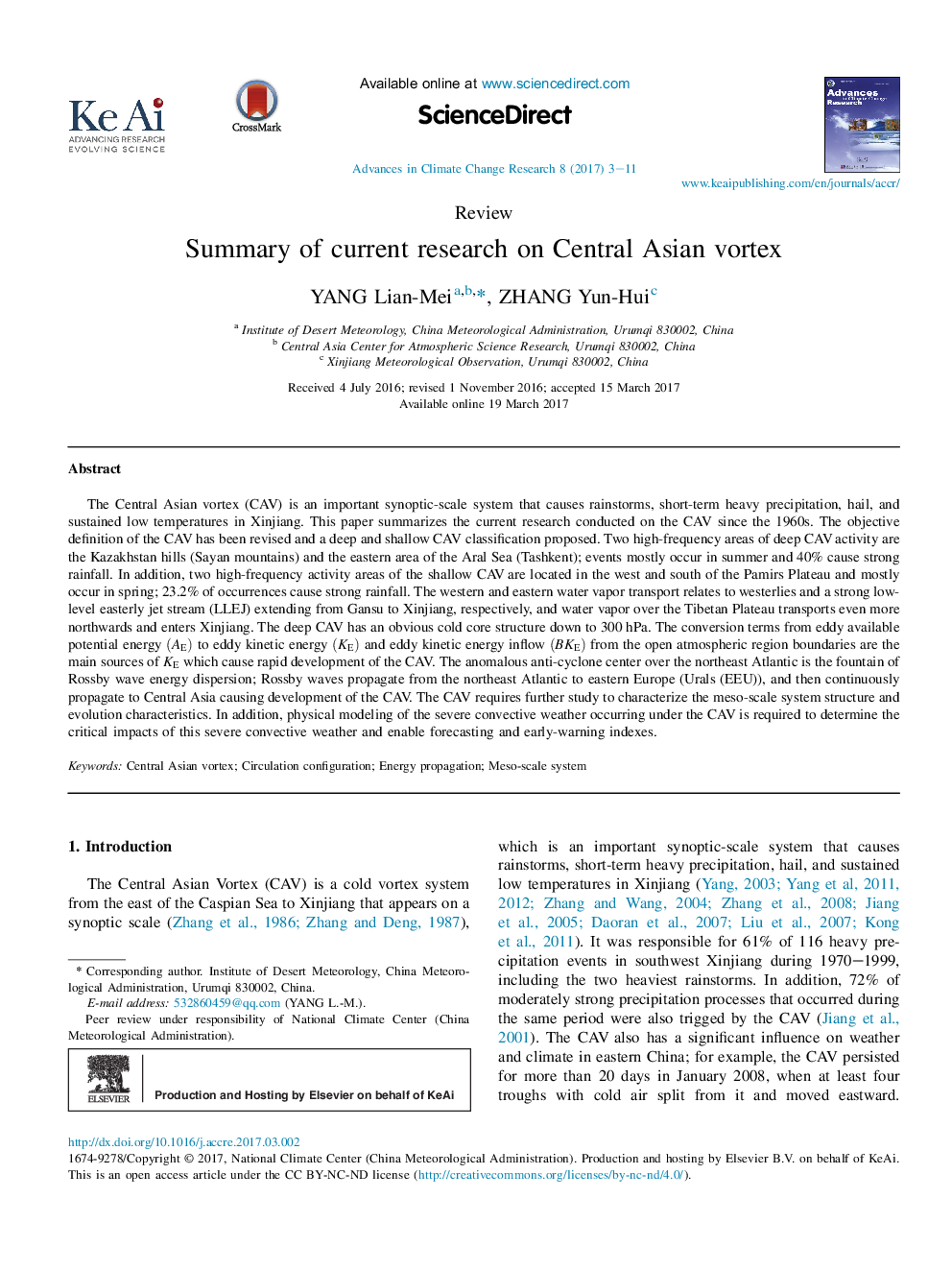| Article ID | Journal | Published Year | Pages | File Type |
|---|---|---|---|---|
| 5778984 | Advances in Climate Change Research | 2017 | 9 Pages |
The Central Asian vortex (CAV) is an important synoptic-scale system that causes rainstorms, short-term heavy precipitation, hail, and sustained low temperatures in Xinjiang. This paper summarizes the current research conducted on the CAV since the 1960s. The objective definition of the CAV has been revised and a deep and shallow CAV classification proposed. Two high-frequency areas of deep CAV activity are the Kazakhstan hills (Sayan mountains) and the eastern area of the Aral Sea (Tashkent); events mostly occur in summer and 40% cause strong rainfall. In addition, two high-frequency activity areas of the shallow CAV are located in the west and south of the Pamirs Plateau and mostly occur in spring; 23.2% of occurrences cause strong rainfall. The western and eastern water vapor transport relates to westerlies and a strong low-level easterly jet stream (LLEJ) extending from Gansu to Xinjiang, respectively, and water vapor over the Tibetan Plateau transports even more northwards and enters Xinjiang. The deep CAV has an obvious cold core structure down to 300Â hPa. The conversion terms from eddy available potential energy (AE) to eddy kinetic energy (KE) and eddy kinetic energy inflow (BKE) from the open atmospheric region boundaries are the main sources of KE which cause rapid development of the CAV. The anomalous anti-cyclone center over the northeast Atlantic is the fountain of Rossby wave energy dispersion; Rossby waves propagate from the northeast Atlantic to eastern Europe (Urals (EEU)), and then continuously propagate to Central Asia causing development of the CAV. The CAV requires further study to characterize the meso-scale system structure and evolution characteristics. In addition, physical modeling of the severe convective weather occurring under the CAV is required to determine the critical impacts of this severe convective weather and enable forecasting and early-warning indexes.
